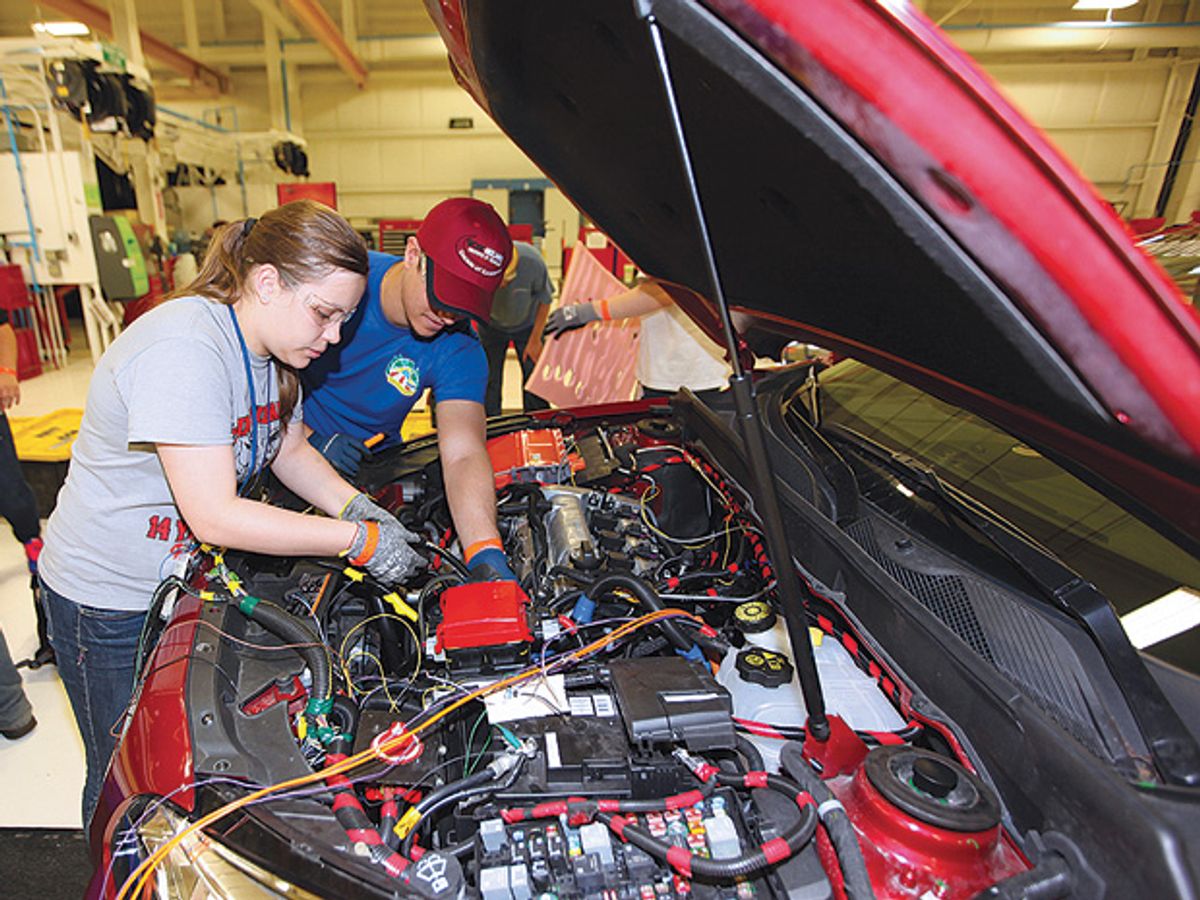Timing is everything. Five years ago this month, I drafted an article forIEEE Spectrum on the need for thousands of new engineers in the U.S. auto industry, as many of its white-collar employees approached retirement.
Then the industry went off a cliff. Years of mismanagement and the severe impact of the Great Recession led to the 2009 bankruptcy and federally backed restructuring of General Motors and Chrysler. The article never ran.
Yet the main point remains valid: More than one in three U.S. auto-industry engineers in 2008 were baby boomers, and during the economic crisis, many of those engineers retired early. Meanwhile, the U.S. industry recovered and resumed hiring, and it hasn’t stopped.
The Center for Automotive Research (CAR), a group funded by the automobile industry in Ann Arbor, Mich., said last year that it expected carmakers overall to add 35 000 jobs and suppliers another 44 000. Last July, for example, Ford Motor Co. said it would hire 3000 salaried employees—800 more than planned—of whom four-fifths would be technical professionals in product development, manufacturing, quality assurance, purchasing, and IT.
Many engineers hired into the auto industry will need backgrounds in “mechatronics”—a combination of mechanical, electrical, and software engineering required for the integration of increasingly sophisticated electrical and mechanical equipment found in automobiles. Those skills are “highly sought after, and that talent pool isn’t growing,” said Mark Roberts, GM’s director of talent acquisition for North America, in 2009. And nothing’s changed since then, says Kristin Dziczek, director of CAR’s industry and labor group.
The most desirable new engineers have hands-on experience building vehicles or subsystems. Historically, Detroit’s automakers have hired from engineering competitions like EcoCar2 (or its predecessor, Challenge X), in which students modify a production vehicle to make it environmentally friendlier. Similarly, in the Solar Car Challenge and the Formula SAE competition, student teams design, build, and race lightweight solar-powered cars or single-seat race cars.
But student contestants are a drop in the bucket. As automakers cast a wider net among engineering graduates, they’re finding a new reality: “We are not the employer of choice,” one company told Dziczek. “This isn’t where the action is.”
The industry faces a triple whammy, Dziczek says. First, students doubt that auto industry jobs are secure. And for many, Michigan and the Midwest are simply not as appealing as, say, California. Finally, the jobs and challenges themselves aren’t seen as exciting.
Detroit’s image in particular doesn’t help. In the 2000s, a messy sex-and-perjury scandal sent the city’s former mayor to jail. The current bankruptcy of the city of Detroit is the latest blow. But recruiters are trying to counter this by underscoring the global nature of the industry, as automakers share platforms and architectures among vehicles built all over the world.
“You may be willing to live in Michigan if you get a chance to work in Australia or China,” GM’s Roberts pointed out. Today, GM runs engineering and design centers in North America, South America, Europe, China, and South Korea.
Dziczek also sees promise in the allure of cutting-edge automotive technologies. Emerging efforts to build green, connected, and autonomous automobiles pose technical challenges that she believes newly minted engineers find appealing.
Stanford University’s efforts in autonomous vehicles, along with Google’s self-driving car prototypes, have raised the visibility of auto tech. Global automakers—including BMW, Daimler, Ford, General Motors, Nissan, Toyota, and Volkswagen—have opened and expanded Silicon Valley outposts to scout technologies from outside the auto industry. They are working on the challenges of integrating consumer electronic devices—with a typical 18-month product cycle—into vehicles that must last 15 years or more.
Can Detroit and the U.S. automotive industry drum up its cool factor? Will engineering students buy the argument that automakers offer fun projects? Dziczek says that it will take work—but she’s more optimistic today than she was five years ago.
This article originally appeared in print as “Should You Move Into Mechatronics?”
